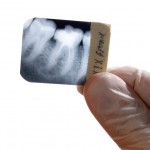
In yesterday’s blog we looked at the outcomes of one versus two visit root canal treatment . Today we are looking at a review which seeks to identify what the prevalence of periapical radiolucencies and non-surgical root treatment is in the population.
The authors searched the MEDLINE and EMBASE databases with hand searching of the most recent 2 years of a number of relevant dental journals. Studies in English that provided data on the prevalence of both periapical radiolucency and conventional nonsurgical root canal treatment (RoCT) in general patient populations were included. Studies using treatment modalities no longer used; that only sampled patients known to have or presenting for RoCT, and studies without radiographic measurement of periapical radiolucency or RoCT prevalence were excluded. Two investigators screened the titles and abstracts of all articles identified in the electronic and manual searches. Study quality was assessed.
33 studies (300,861 teeth) were included. There was significant heterogeneity because of differing outcome measures, geographic location, operator type, and variations in patient selection or sample size. Interpretation criteria and radiographic methods also varied. The included studies were mainly from the 1990s and 2000s. They found:-
- The prevalence of teeth with periapical radiolucency was 5% of all teeth, with a range (0.5% – 13.9%, SD 6%).
- The prevalence of teeth with nonsurgical endodontic treatment was approximately 10%, range (1% -22% SD 6%).
- Substantially more teeth had endodontic treatment than radiolucency. Of the teeth that had endodontic treatment, approximately 36% (SD = 10%) also had periapical radiolucency.
- The prevalence of periapical radiolucency on teeth that had not received RoCT was consequential (i.e., 2%, standard deviation = 4%).
- 24 studies included data on technical treatment quality based on radiographic findings alone:-
- Up to 78% of RoCT were reported as being inadequate,
- Up to a maximum of 56%, of RoCT were reported as being acceptable.
- Differences in criteria and reporting precluded general meta-analysis of root canal treatment quality.
The authors concluded
The prevalence of periapical radiolucency was very high, broadly equivalent to one radiolucency per patient. The prevalence of teeth with root canal treatment was very high, broadly equivalent to 2 treatments per patient. Billions of teeth are retained through root canal treatment
Links
Pak JG, Fayazi S, White SN. Prevalence of Periapical Radiolucency and Root Canal Treatment: A Systematic Review of Cross-sectional Studies. J Endod. 2012 Sep;38(9):1170-6. PubMed PMID: 22892730.
